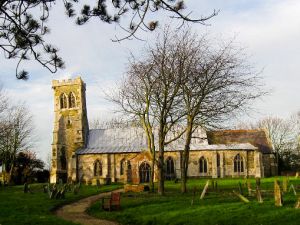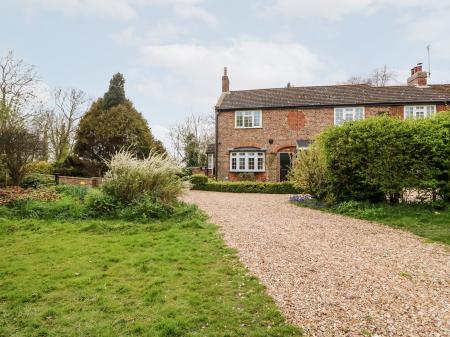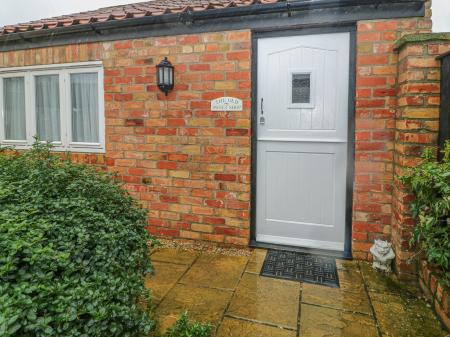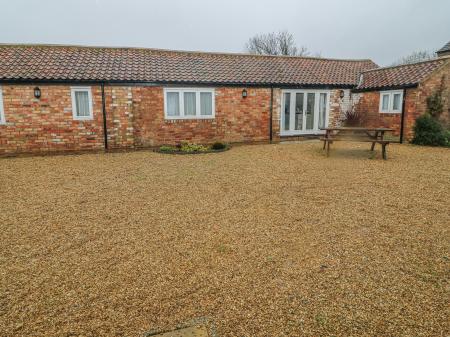
The church was built in the Norman period, but most of the current building dates to the 13th and 15th centuries, when the tower and most of the windows were added. The doorway is 14th century, and bears the Latin inscription 'Situs est sanctum Johis' Grantham de Moulton, Pahoni istius Ecclesiae'.
The tower arch is early 13th century and the nave arcade dates to around 1200. The chancel arch is earlier, dating to around AD 1150. There is a 14th-century panelled screen between the nave and chancel, and another between the chancel and chapel. The nave and south aisles have very nice 15th-century tie-beam roofs, repaired in 1611.
The church windows retain stained glass from the late 13th and early 14th centuries. In the south chapel is a 14th century stone reredos carved with a series of grotesque heads. The altar table is 16th century, and the altar rail is 19th century but incorporates late medieval poppyhead finials.
There are two pulpits - one Jacobean and the other early 17th century, donated by Oriel College, Oxford. The interior is remarkably open and spacious, with only a few lonely pews to clutter the space. One box pew is 18th century.
The octagonal font is made from a 13th-century bowl supported on 14th-century shafts, set upon a richly carved octagonal base from the 15th century. The base may possibly be a font bowl turned upside down. In the north-east corner of the nave is a worn medieval grave slab with an illegible inscription.
Another historic highlight is a 16th-century parish chest, and there are fragments of a 12th-century capital on a window ledge just west of the porch.
An archaeological investigation in 1998 revealed nine medieval burials, dating from the 13th and 14th centuries. All but one of the burials were aligned on an east/west axis, with the heads at the west end. Five of the graves were thought to represent two family groups.
All Saints is no longer used for regular worship and is in the care of the Churches Conservation Trust, who generally keep it open to visitors.
 We've 'tagged' this attraction information to help you find related historic attractions and learn more about major time periods mentioned.
We've 'tagged' this attraction information to help you find related historic attractions and learn more about major time periods mentioned.


